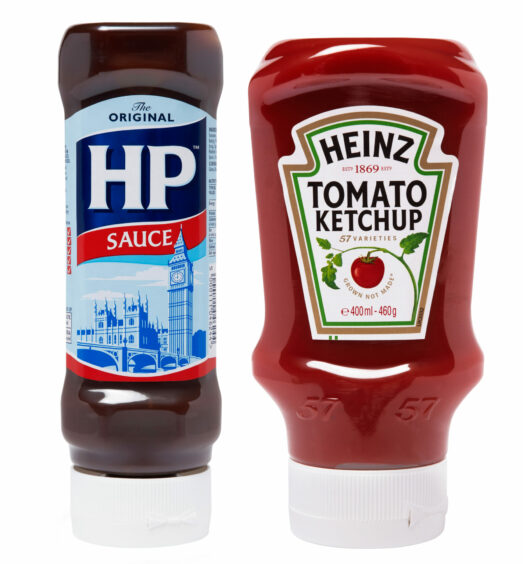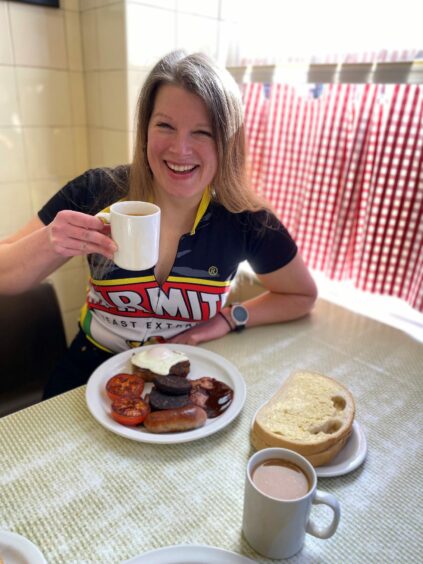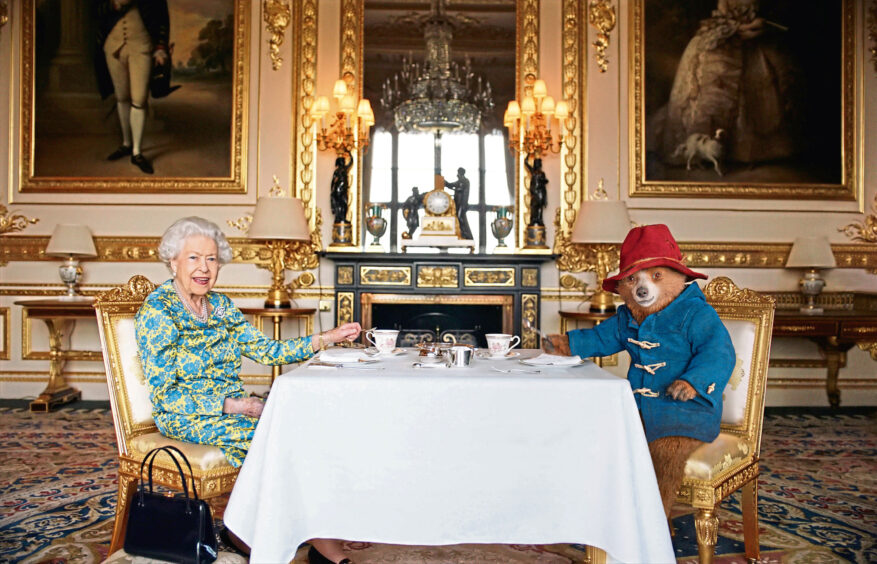
It is for some the most important meal of the day but, for others, it is a quick gulp of coffee on the way out the door. For many it’s not even on the menu at all.
From fruit and yoghurt to eggs and bacon, cornflakes and burnt toast to french toast and fry-ups, like religion and politics a person’s breakfast choice is their own very individual affair.
However, according to food writer Felicity Cloake, that does not mean we are any less passionate – or opinionated – about what constitutes a “proper” breakfast.
She said: “Everyone has an opinion on breakfast. You don’t need to be a big foodie. It’s not really an income thing or a class thing. It’s quite rare in this country, where everything seems to be sort of bogged down with class, that breakfast transcends all of that.
“Yes, there’s a bit of a split between our idea of a proper breakfast and what most of us actually get to eat on a day-to-day basis, but it’s still got that place in our heart. We still hold up a proper breakfast as a real icon of our cooking.”
Whether a steaming bowl of porridge – topped with sugar or salt, depending on your taste – a full fry-up, pungent kippers or wobbly poached eggs, breakfast is something of a “living culinary tradition” that Cloake argues has evolved throughout history and across the country.
Or at least that’s what she discovered when she cycled the length and breadth of the Britain, exploring (and tasting) all the regional differences that make people emphatically debate the value of scrambled versus fried, lorne versus link.
Thoughtfully detailed in her new book, Red Sauce Brown Sauce: A British Breakfast Odyssey, Cloake’s journey helped her understand more fully why, as AA Gill once put it, “breakfast is everything” – and after eating 47.5 plates over almost 1,500 miles, she discovered the only similarity between our nation’s breakfasts is their differences.
“I was disappointed that I didn’t eat more – I should have done one every day but sometimes it was quite hard to find a good one,” she said with a laugh. “There are still these real differences, and not only just in the four nations, but also the regional differences within those nations, too. I find that fascinating.
“The only person that I spoke to on my journey who didn’t have strong opinions was a French lady who was married to a guy I stayed with in Northern Ireland. She just said, ‘I couldn’t believe it when I came to this country that this whole breakfast was a thing – I’d rather have a croissant’.
“Everyone else had opinions, which normally fitted with where they came from. For example, people from the north of England, even if they now live in the south, said to me they could only have brown sauce on their bacon sandwiches or their ancestors would spin in their graves! Even when people don’t eat fry-ups all the time, they still feel like it’s a really tribal thing for them.
“It’s also quite exciting the way the breakfast is innovating. When I was down in Glastonbury – which obviously has a very hippy vibe – I actually had a really decent vegan fry-up, which surprised me. I love the fact that the meal can move with the times and it doesn’t have to be stuck in this slightly Victorian, country house, south of England rut. It’s not all Downton Abbey. It’s like a real living tradition that ordinary people feel passionate about.”
While sampling bubble and squeak in the south-east, East Anglia’s fresh black pudding, soda farls in Northern Ireland, and hog’s pudding in the West Country – not to mention countless cups of tea – Cloake admits she became particularly enamoured with Scotland’s unique produce.
She continued: “Scotland wins out just because you’ve got such amazing pudding. Obviously, the black pudding is quite common to all the breakfasts, but then you’ve got white pudding – or mealie pudding – and then fruit pudding, too. I remember the first time I saw it in Scotmid, I turned to my brother-in-law and was like, ‘What on earth is this?’ He just said, ‘What, do you not have that down south?’
“I’m also a really big fan of the tattie scone. I think that we could with a bit more of that in England. You sometimes get bubble and squeak in London, but otherwise it’s maybe hash browns or chips, and I don’t think they work so well on a breakfast. You want something a bit carb-y and satisfying to soak up all the grease. I would be prepared to front a campaign to take the tattie scone all around the UK.”
With a history of heavy industry, manual jobs and, well, poor weather, Cloake says it’s no wonder the UK has become known for its breakfasts – something that’s in stark contrast to our European neighbours, who opt for smaller, less filling meals in the morning.
“It’s quite a statement of us as a country, isn’t it,” added Cloake, whose last book, One More Croissant For The Road, saw her cycle across France in search of the definitive versions of their classic cuisine. “This is how we start the day, we’re not messing around.
“We’re not having a tiny coffee and something sweet on the hoof. We’re really making time for breakfast, or we are in our minds at least. It’s kind of like fighting food, isn’t it? It’s interesting, the cultural difference between us and certainly our nearest neighbours in France – they would be horrified by eating our breakfasts, and yet they’re just 20 miles away.”
What’s more, when it comes to ingredients, our biggest producers of bacon, smoked fish and everything in between, are universally concerned with the highest quality.
She added: “I loved meeting the people that made the produce and seeing their passion for it. When I spoke to Andrew Ramsay, from Ramsay’s of Carluke [a family-run business famous for their bacon], he was just so passionate about the different recipes. With him and with, say, a one-man band down in Cornwall making hog’s pudding, they had the same passion for taking the best-quality produce and turning it into something people could be proud of. Every time I met someone, I came away smiling because I thought, you know, there’s a bright future for breakfast.”
Now that she has taste-tested her way from Aberdeen to Aberystwyth, and even discovered that red sauce is slightly more popular than brown (her straw poll saw 31 votes for red, 24 for brown), Cloake, who also writes the Guardian’s “How to cook the perfect…” column, still won’t be drawn on what makes the ultimate cooked breakfast.
She said: “I think if I did, I would go into hiding for at least six months. Whatever I said there would be people saying that I’ve got it wrong or accusing me of regional bias – and I just love that. I love that we all care about it in such different ways.”
From the book: It is a right royal treat but Tayside roots? That spreads truth a bit thin
In this extract from Felicity Cloake’s Red Sauce Brown Sauce, she charts history of Paddington’s favourite.
Though they’re based in a light industrial estate on the outskirts of Arbroath, Mackays are, in fact, the last remaining producer of Dundee marmalade – quite something when the city was once synonymous with the stuff.
It’s often claimed that marmalade was invented there by Janet Keiller, which is pure nonsense – the name may come from the Portuguese word for quince paste, but there’s a wealth of evidence it was made from bitter oranges in this country long before the Keiller family established their confectionery shop in Dundee in the late 18th Century.
Most significantly, the first English-language recipe recognisable as marmalade, as opposed to earlier orange pastes, was published in 1714 in Mary Kettilby’s Collection Of Above Three Hundred Receipts In Cookery, Physic And Surgery, though she does not seem to have been a fan of the bitterness which is the hallmark of a good marmalade, so it must be admitted that hers was probably a bit rubbish. (Sorry, Mary.)
What the Keiller family was (probably) the first to do, some time around 1800, is produce marmalade commercially, allegedly after James Keiller purchased a load of Seville oranges at a knock-down price from a Portuguese ship sheltering from the weather in Dundee harbour. Realising they were too bitter to eat, he gave them to his mother Janet, who turned them into a sweet preserve instead.
Given that Seville oranges, and marmalade recipes, were hardly unknown in Scotland at this time, the idea this was entirely her own invention smells fishier than a smokie sandwich to me. Janet may, however, have been unusual in making her marmalade spreadable; earlier versions were thick enough to slice, and tended to be served as a sweetmeat or as part of a dessert course.
Indeed, it was almost certainly in Scotland that marmalade first migrated to the breakfast table, Samuel Johnson noting in his travels in the Western Isles in 1775 that Highland men always started their day with whisky, and: “Not long after the dram, may be expected the breakfast, a meal in which the Scots, whether of the lowlands or mountains, must be confessed to excel us. The tea and coffee are accompanied not only with butter, but with honey, conserves, and marmalades. If an epicure could remove by a wish, in quest of sensual gratifications, wherever he had supped he would breakfast in Scotland.”
In any case, though James Keiller and Sons was to become the world’s leading marmalade manufacturer in the latter half of the 19th Century, with factories in Guernsey (to avoid a punitive sugar tax) and later east London and even Germany, the company went out of business in 1992, thanks, I later learn, to maladministration, rather than a lack of demand for their marmalade. In fact a Keiller’s marmalade is still produced, albeit for export only, down in Cambridgeshire, by the same American company that makes Hartley’s jam.
Red Sauce Brown Sauce: A British Breakfast Odyssey is out now

Enjoy the convenience of having The Sunday Post delivered as a digital ePaper straight to your smartphone, tablet or computer.
Subscribe for only £5.49 a month and enjoy all the benefits of the printed paper as a digital replica.
Subscribe
 © SYSTEM
© SYSTEM